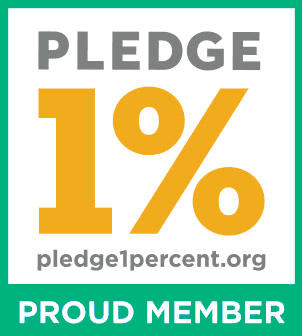12 Most Sustainable Hat Brands: The Conscious Consumer’s Guide
Affiliate Disclosure
Hey fellow impactful ninja ?
You may have noticed that Impactful Ninja is all about providing helpful information to make a positive impact on the world and society. And that we love to link back to where we found all the information for each of our posts.
Most of these links are informational-based for you to check out their primary sources with one click.
But some of these links are so-called "affiliate links" to products that we recommend.
Why do we add these product links?
First and foremost, because we believe that they add value to you. For example, when we wrote a post about the environmental impact of long showers, we came across an EPA recommendation to use WaterSense showerheads. So we linked to where you can find them. Or, for many of our posts, we also link to our favorite books on that topic so that you can get a much more holistic overview than one single blog post could provide.
And when there is an affiliate program for these products, we sign up for it. For example, as Amazon Associates, we earn from qualifying purchases.
What do these affiliate links mean for you?
First, and most importantly, we still only recommend products that we believe add value for you.
When you buy something through one of our affiliate links, we may earn a small commission - but at no additional costs to you.
And when you buy something through a link that is not an affiliate link, we won’t receive any commission but we’ll still be happy to have helped you.
What do these affiliate links mean for us?
When we find products that we believe add value to you and the seller has an affiliate program, we sign up for it.
When you buy something through one of our affiliate links, we may earn a small commission (at no extra costs to you).
And at this point in time, all money is reinvested in sharing the most helpful content with you. This includes all operating costs for running this site and the content creation itself.
What does this mean for me personally?
You may have noticed by the way Impactful Ninja is operated that money is not the driving factor behind it. It is a passion project of mine and I love to share helpful information with you to make a positive impact on the world and society. However, it's a project in that I invest a lot of time and also quite some money.
Eventually, my dream is to one day turn this passion project into my full-time job and provide even more helpful information. But that's still a long time to go.
Stay impactful,
Amid growing concerns about the textile industry’s environmental impact, there is pressure to find greener clothes and accessories for your wardrobe, from a sun hat for the summer to a warm beanie for the winter. Unfortunately, fashion greenwashing makes it harder for you and all other consumers to figure out which clothing brands offer the most eco-friendly garments and accessories. So, we had to ask: Which are the most sustainable hat brands?
The most sustainable bag brands are TOPIKU, Patagonia, and Ecoalf, which prioritize reclaimed and recycled materials, reduce waste, and strive for circularity. In addition, United by Blue and Pachacuti reduce waste while adhering to ethical manufacturing.
Whether you are searching for a bucket hat or a baseball cap to add to your wardrobe without negatively impacting the soil, the water, the animals, and other people, there is a brand for you. So, let’s keep reading to learn more about the most sustainable bag brands and how they ensure sustainable, ethical practices.
Here’s How We Selected the 12 Most Sustainable Hat Brands
Hats can be one of the higher-impact and less sustainable clothing accessories due to the conventional use of resource-intensive materials like synthetic fabrics made with virgin fossil fuels or canvas based on traditional cotton.
“Sustainable: The ability to be maintained at a certain rate or level | Avoidance of the depletion of natural resources in order to maintain an ecological balance”
Oxford Dictionary
The brands on this list were chosen based on their commitment and actions to promote sustainable practices while reducing the environmental impacts of the textile industry.
They are transparent about their materials, processes, and workforce management within their supply chain.
Some brands focus their efforts on reducing waste and optimizing natural resources while others strive to reduce the carbon footprint of their clothes.
All of these brands share the commitment to reshape the textile industry toward a more sustainable and Earth-friendly sector.
These Are the 12 Most Sustainable Hat Brands
Most Sustainable Hat Brands
Overall, these hat brands are sustainable. Yet, they take various approaches to reduce environmental impacts and uphold ethical standards. Let’s dive into each brand and find out more.
TOPIKU: Low-Impact Hats Upcycled From Waste
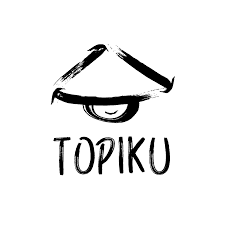

“Our sustainable hats are responsibly crafted from upcycled and recycled waste materials, all sourced through traceable methods. Over the years, we have maintained close relationships with our artisans and suppliers to ensure we know the exact conditions of our supply chain.”
TOPIKU
🌎
How do they ensure their sustainability?
TOPIKU ensures their sustainability by reducing their carbon emissions and offsetting them multiple times.
- Firstly, they aim to reduce their climate impact by tackling carbon emissions. Their main reduction strategy is to recycle and upcycle waste materials to make every part of their baseball hats. These include HDPE plastic salvaged from buckets for brims, organic cotton upcycled from curtain deadstock for hat panels, aluminum recycled from soda cans for buttons, and leather in scraps collected from local businesses (makers of shoes, belts, jackets, etc.) for patches and straps. Thanks to their choice of materials, their hats’ sourcing and production stages each have a very low carbon footprint, accounting for only 13% of the life-cycle footprint. Additionally, the brand also tackles the emissions happening during the distribution of their products by utilizing more sea freight.
- Secondly, TOPIKU offsets all their carbon emissions and (10 times) more. The brand invests in reforestation and renewable energy projects certified by Climate Neutral. Furthermore, they also offset their digital footprint through Carbon Fingerprint.
🌐
How do they ensure their ethics?
TOPIKU ensures their ethics by being transparent about their suppliers, processes, and impact. They publish the life-cycle carbon footprint of their hats, enabling consumers to understand the impact of their purchase. TOPIKU’s Supplier Code of Conduct complies with the ILO’s Fundamental Principles and Rights at Work.
🤝
Are they part of any giving-back programs?
TOPIKU is a member of 1% for the Planet, pledging a portion of their sales—typically 1%—to support environmental causes. The brand has exceeded the standard member commitment and donated 4% of their annual revenues in the last four years to support social and environmental nonprofit organizations in Indonesia and worldwide.
🛍️
What is their product range?
- Best for: menswear, womenswear
- Product range: hats
- Price range: $$
- Size range: one size
Patagonia: Everyday Wear for Those Who Care
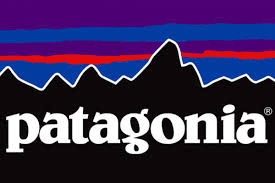

“Together, we can prioritize purpose over profit and protect this wondrous planet, our only home.”
Patagonia
🌎
How do they ensure their sustainability?
Patagonia puts sustainability at the center of their operation.
- They work to reduce, rather than simply offset, carbon emissions where it matters the most: in the supply chain and in material manufacturing. They reduce their carbon footprint by removing high-impact virgin fossil-based fibers from their collections, using “Environmental Profit and Loss” to guide their production decision, and helping their suppliers to cut emissions. For example, Patagonia’s fall 2023 collection was made up mostly of preferred materials (91% by fabric weight), including Regenerative Organic Certified fibers, hemp, man-made cellulose fibers, recycled cotton, and recycled polyester.
- On top of that, Patagonia’s Worn Wear Program encourages customers to repair and recycle their products, extending the textile lifecycle and reducing waste.
- Lastly, Patagonia is certified as a B Corporation and a Bluesign® brand.
🌐
How do they ensure their ethics?
Patagonia commits to fair trade practices. Through the partnership with Fair Trade USA, they currently produce 86% of their clothes in 20 Fair Trade Certified™ factories.
- Patagonia also pays a premium for every item produced in such factories, accumulating in a fund for workers to use in their chosen community projects, whether in healthcare or parent support or to withdraw as a cash bonus.
- Additionally, they have various social responsibility programs to prevent harm and create positive impacts on the lives of apparel workers in their supply chain. These include the Fair Labor Association, the Living Wage Program, the Migrant Workers Program, and the Responsible Purchasing Practices.
- Patagonia is also fully transparent about the locations of their facilities and suppliers.
🤝
Are they part of any giving-back programs?
Since 1985, Patagonia has pledged 1% of sales annually to environmental causes. They have awarded over $89 million in cash and kind donations to domestic and international grassroots environmental groups, making a difference in their local communities. In 2022, the founder of Patagonia gave away his family’s ownership of the company to the newly created Patagonia Purpose Trust and the not-for-profit organization Holdfast Collective, ensuring that all future profits from the company are used to fight the climate and extinction crisis.
🛍️
What is their product range?
- Best for: kidswear, menswear, womenswear
- Product range: shirts, pants, jackets, blazers, hoodies, sweatshirts, T-shirts, shorts, plus-size
- Price range: $$$
- Size range: XXS–XXXL
Ecoalf: Spanish Clothing Brand Committing to Recycling Waste and Cleaning the Environment


“I believe the time when fashion was just about looking good is over. More than ever it has to be about doing what is right and feeling good about it.”
Javier Goyeneche, founder of Ecoalf
🌎
How do they ensure their sustainability?
Ecoalf’s commitment to sustainability is evident in their innovative recycling practices.
- They minimize the use of natural resources by using mainly waste as raw materials, collecting and transforming discarded materials into recycled fabrics like recycled polyester, recycled cotton, recycled wool, and recycled cashmere. In 2023, they launched their first 100% recycled cotton collection that can be recycled again to achieve circularity. As well, in 2021, 74% of the materials used by Ecoalf were recovered from waste, saving 1,377 tons of CO2. In combination with recycled fabrics, Ecoalf uses a small percentage of low-impact natural fabrics, such as linen and kapok.
- Ecoalf is also Bluesign® and B Corporation certified.
🌐
How do they ensure their ethics?
Ecoalf ensures their ethics by protecting their workers and the environment.
- In particular, they ensure there are safe and fair working conditions in their supply chain by mandating a Code of Conduct, an Equality Scheme, a Crime Prevention Handbook, a Disciplinary System, and a Bullying at Work Protocol.
- Additionally, they run many campaigns to raise awareness of the state of our oceans and earth-damaging consumerism habits.
🤝
Are they part of any giving-back programs?
Ecoalf actively participates in giving-back programs. The Ecoalf Foundation was founded to cleanse the oceans of marine waste with the help of the fishing industry while giving a second life to plastic waste through recycling and closing the loop. They achieve this through their “Upcycling the Oceans” projects. In 2021, Ecoalf donated 10% of all Because There’s No Planet B sales to the Ecoalf Foundation to expand the “Upcycling the Oceans” project beyond the Spanish border and into countries like Thailand, Greece, and France. The foundation also partners with Biotherm to set up the framework of “Limpia ríos, salva océanos”, a project supported by corporate volunteer days to collect waste and restore the environment. Additionally, Ecoalf’s employees volunteer in various environmental incentives.
🛍️
What is their product range?
- Best for: womenswear, menswear, kidswear
- Product range: shirts, pants, jackets, blazers, hoodies, sweatshirts, tops, blouses, knitwear, T-shirts, sneakers, accessories
- Price range: $$
- Size range: XS–XL
United by Blue: Bags and Accessories That Designs Out Waste at Both Ends of the Life-Cycle


“Our hope is that through engaging cleanups, better business practices, and trash-cleaning products we can clean up the planet and the fashion industry one sustainable choice at a time. ”
United by Blue
🌎
How do they ensure their sustainability?
United by Blue ensures sustainability by designing out waste. In particular, they make durable products from sustainably sourced, low-impact materials. They also make them in factories with some of the highest social and environmental health certifications on a slow fashion timeline.
- Firstly, they source a high proportion of lower-impact materials. They prioritize biodegradable, regenerative fibers, recycled materials, and deadstock fabric.
- United by Blue’s products are also based on some of the most sustainable fabrics, including organic cotton (with GOTS and OCS certifications), recycled cotton (with GRS and OEKO-TEX® certifications), recycled wool (with RWS certification), recycled polyester (with GRS certification), recycled nylon (with GRS certification), and hemp (and SofthempTM). With high-impact fabrics like cashmere and viscose, the brand opts for the most sustainable options, including recycled cashmere and Lenzing’s EcoVero™ (a sustainably sourced viscose manufactured in a closed-loop system).
- Furthermore, United by Blue commits to having no single-use plastic within their packaging. Since 2022, all of their direct-to-consumer shipments have been packed in compostable poly bags, paper and cardboard boxes, and recyclable kraft tapes.
- Regarding their climate impact, the brand measures and reduces carbon emissions, especially in four key areas: shipments, production, energy, and stores. Their emission reduction measurements focus on reducing and consolidating shipments, transporting overseas products by boat, seeking renewable energy options, and prioritizing energy-efficient appliances, lighting, and materials in their physical stores and offices.
🌐
How do they ensure their ethics?
United by Blue binds all their suppliers with a Code of Conduct covering all of ILO’s Fundamental Principles and Rights at Work.
- They trace most of their supply chain and publicly share on their website their manufacturing partners, which are certified with some of the top sustainability standards (Bluesign®, Business Social Compliance Initiative Code of Conduct – BSCI, Global Organic Textile Standard, Social Accountability International – SA8000, and Worldwide Responsible Accredited Production – WRAP).
- Regarding animal welfare, they source wool certified by the Responsible Wool Standard, ensuring the ethical treatment of sheep in their supply chain.
🤝
Are they part of any giving-back programs?
United by Blue removes one pound of trash from oceans and waterways for every product purchased. They achieve this by organizing community, corporate, DIY, high-yield, and international cleanups.
🛍️
What is their product range?
- Best for: menswear, womenswear
- Product range: bags, wallets, blazers, beanies, scarves
- Price range: $$$
- Size range: S–XXL
Pachacuti: Panama Hats Made Fair and Sustainable

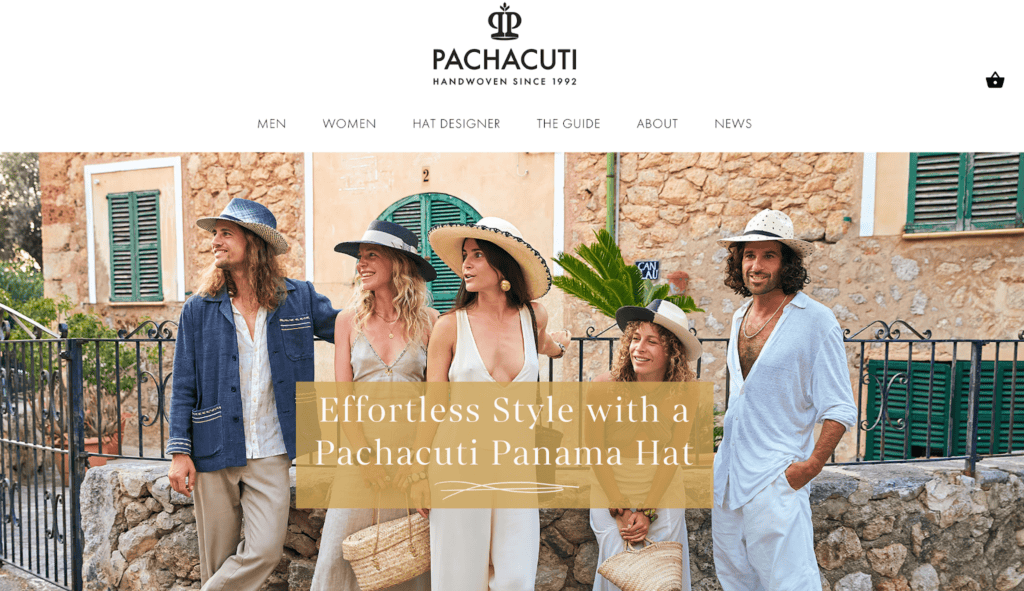
“Pachacuti has been a pioneer of radical transparency in the fashion supply chain. We believe that transparency is the first step towards a new culture. A culture of openness and accountability. More importantly, a culture of responsibility and trust.”
Pachacuti
🌎
How do they ensure their sustainability?
Pachacuti ensures their sustainability by sourcing low-impact materials, managing and reducing waste, and measuring energy and water use.
- Firstly, they source materials for a more sustainable design aesthetic, encompassing both their natural beauty and their environmental contribution during the whole life-cycle of a hat. Specifically, Pachacuti hats are made with straw harvested sustainably from the leaves of Carludovica palmata plants. These plants can grow up to 13 feet tall and be harvested for leaves every month after three years. The brand sources these organically-grown leaves from a community-owned plantation within a 5,600-hectare protected bio reserve in a tropical cloud forest near the Ecuadorian coast.
- Secondly, Pachacuti makes hats to last and helps to keep them out of landfills for as long as possible (if not completely). With every hat, they enclose an information card detailing how to look after the hat and how to ensure it has a long life. They also provide a complete hat cleaning, repair, and restoration service. During the production stage in Ecuador, hat trimmings create compost used to grow vegetables in the garden of their weaving association, which is then used to feed the workers. At the end-of-life stage, their hats (except for the ribbon) can go into a compost heap and break down completely. Additionally, their manufacturing facility has the equipment to store and purify wastewater and recycle it back into circulation.
- Thirdly, Pachacuti implements GPS mapping to trace their hats’ journey as well as collect data on the energy consumed and water used in making their products.
- Finally, their hats are hand-woven, saving energy and reducing the climate impact.
🌐
How do they ensure their ethics?
Pachacuti ensures their ethics by committing to the full traceability of their hats.
- They piloted the EU Geo Fair Trade project, which used GPS mapping to trace the journey of their Panama hats from the straw grown in the coastal cloud forest to the houses of their hat weavers.
- Pachacuti also works directly with artisans through every step of the process—weaving, dyeing, blocking, and finishing. Their entire supply chain is Fairtrade-certified, ensuring fair payment and safe working conditions for the farmers and artisans making their straw products.
🤝
Are they part of any giving-back programs?
Pachacuti is not known to be part of any giving-back programs.
🛍️
What is their product range?
- Best for: womenswear, menswear
- Product range: hats, shoes
- Price range: $$$
- Size range: 55–63cm (head circumference)
Tentree: A Lifestyle Clothing Brand That Plants Trees for Every Item Purchased


“ We believe the future of business is restorative.”
Tentree
🌎
How do they ensure their sustainability?
Tentree ensures sustainability by planting trees, promoting circularity, opting for low-impact fabrics, and attaining responsible packaging.
- Since their inception, they have planted more than 100,000,000 trees, which helps regenerate ecosystems, capture carbon, and provide forestry jobs in communities around the world. Together with textile recycler SuperCircle and resale guru Treet, Tentree has created an integrated solution to resell or recycle pre-loved Tentree clothing items, keeping them in circulation and out of landfills.
- Tentree also uses eco-friendly fabrics and blends, including organic cotton, hemp, recycled polyester, and TENCEL™. For example, the InMotion Tank is made with recycled polyester (REPREVE®) and is ideal for hitting the gym.
- Regarding packaging, they have replaced all single-use plastics with FSC-certified and 100% recycled paper.
- Finally, they have B Corporation and Climate Neutral certifications.
🌐
How do they ensure their ethics?
Tentree enforces fair labor practices by collaborating only with manufacturers and suppliers that guarantee a safe and respectful environment for their employees.
- They also regularly audit their partner facilities to ensure compliance with their Code of Conduct and international labor standards. Part of their supply chains is certified by organizations that protect workers, such as Fair Wear Foundation, Global Organic Textile Standard, Sedex Members Ethical Trade Audit, and Worldwide Responsible Accredited Production – WRAP.
- Additionally, Tentree commits to protecting forests through their paper, packaging, and fabric choices.
🤝
Are they part of any giving-back programs?
Giving back is a cornerstone of Tentree’s mission. Tentree plants 10 trees worldwide for every item purchased, contributing to reforestation and combating climate change. In 2022 alone, their customers helped plant over 22 million trees across nine countries, restoring over 2,000 hectares of terrestrial forests, over 1,000 hectares of coastal mangrove forests, and hundreds of hectares of marine land.
🛍️
What is their product range?
- Best for: kidswear, menswear, womenswear
- Product range: T-shirts, tank tops, shirts, sweaters, cardigans, dresses, pants, hoodies, dresses, shorts, skirts, joggers, jackets, coats, underwear
- Price range: $$
- Size range: XXS–XXL
Happy Earth Apparel: Earth-First Organic Clothing Brand
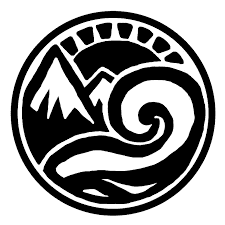
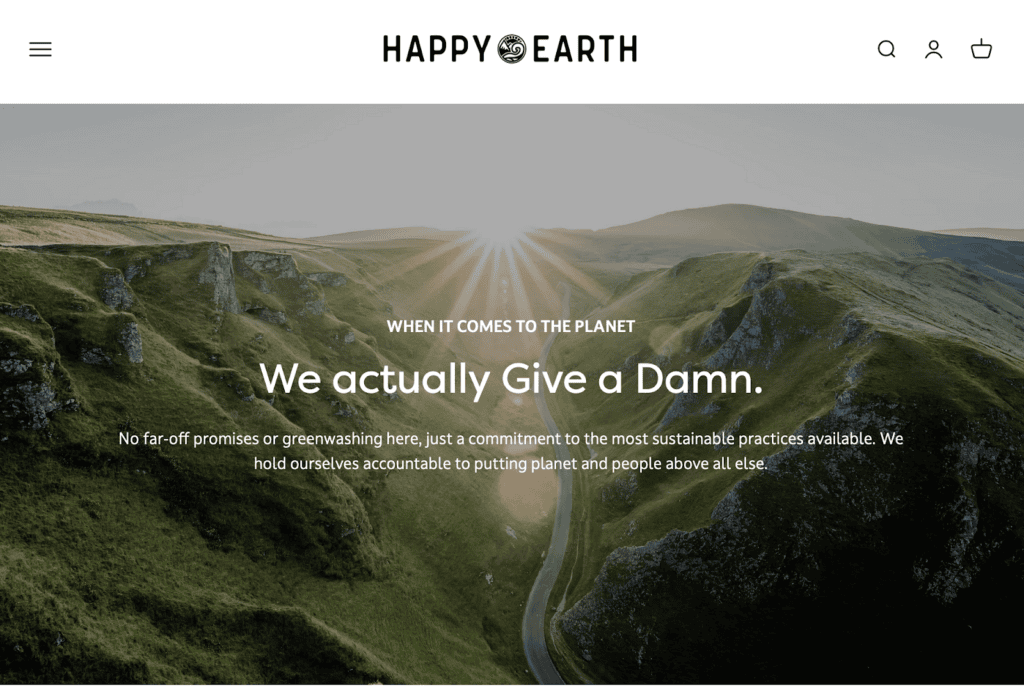
“We’re not cool with compromise when it’s at the expense of our world. We’ll find a good way to do something, or we won’t do it.”
Happy Earth Apparel
🌎
How do they ensure their sustainability?
Happy Earth Apparel ensures sustainability by sourcing sustainable and organic textile materials, using recycled and recyclable packaging, and reducing waste.
- Firstly, Happy Earth Apparel uses a high proportion of organic cotton. For example, their organic sock collection is made with organic cotton that uses a small percentage of recycled nylon and elastane to enhance flexibility and moisture-wicking performance.
- Secondly, they use 100% post-consumer, recycled plastic to make durable packaging bags that can be recycled again. Also, these bags are lightweight, cutting down on transporting emissions and costs.
- Lastly, Happy Earth Apparel has waste-reduction incentives regarding plastic (shipping in bulk), water (wastewater recycling and rain harvesting), and textile (low-waste cutting techniques). Furthermore, Happy Earth Apparel is Climate Neutral Certified for reducing and offsetting their emissions. They also use solar energy in their supply chain to reduce their carbon emissions. Regarding emissions that can’t be avoided, they offset through clean energy projects in the US, Uganda, India, and China. These include providing energy-efficient stoves, capturing methane, and installing biodigesters in rural homes that convert manure waste into gas for cooking.
🌐
How do they ensure their ethics?
Happy Earth Apparel ensures their ethics by binding suppliers with a Code of Conduct covering four of ILO’s Fundamental Principles and Rights at Work. Additionally, over 95% of their products are made in Fairtrade-certified factories, while part of their final production stage is certified by Worldwide Responsible Accredited Production (WRAP). Finally, Happy Earth Apparel traces most of their supply chain.
🤝
Are they part of any giving-back programs?
Happy Earth Apparel actively participates in giving-back programs. As a member of 1% for the Planet, Happy Earth Apparel is committed to donating a minimum of 1% of their revenue to charitable organizations through their Tree Planting, Climate Change, and Trash Clean-Up projects. For example, customers can choose to plant five trees for every purchase.
🛍️
What is their product range?
- Best for: womenswear, menswear
- Product range: shirts, T-shirts, sweatshirts, hoodies, jackets, bottoms, dresses, pants, leggings, shorts, socks, accessories
- Price range: $$
- Size range: XXS–XXL
ASKET: Timeless Clothes Made Under Full Transparency With Life-Cycle Responsibility
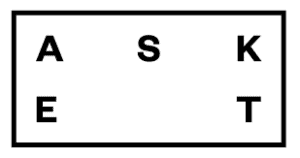

“Our mission is to end overconsumption and restore value to the clothing industry.”
Jakob Dworsky, founder of ASKET
🌎
How do they ensure their sustainability?
ASKET ensures sustainability by reducing waste and using less energy throughout the life-cycle of their garments.
- They tackle the textile waste problem with their Repair Program, which helps keep clothes last longer, and their Revival Program, which diverts used garments from landfills to be repaired, renewed, resold, or recycled. On top of that, they use various recycled fabrics, including GRS-certified recycled wool, recycled cotton, and recycled silk. ASKET also runs a Care Program, helping customers keep their garments fresh longer while using less energy, lowering the environmental impact of the usage stage.
- Additionally, ASKET’s collection includes eco-friendly materials such as organic cotton, linen, and TENCEL™ lyocell. And finally, in an effort to encourage customers to buy and waste less, they are fully transparent about the environmental impact of their clothes.
🌐
How do they ensure their ethics?
ASKET maintains ethics through fair labor practices, responsible sourcing, and a commitment to transparency in their supply chain. In 2022, their average traceability score across their entire collection was 96.0%. Regarding animal rights, they follow the Responsible Wool Standard, appropriately addressing sheep’s welfare and the land they graze on. Specifically, their merino wool is non-mulesed and 100% traceable.
🤝
Are they part of any giving-back programs?
ASKET is not known to be part of any giving-back programs.
🛍️
What is their product range?
- Best for: high-quality, essential, versatile wardrobe pieces
- Product range: tops, sweaters, pants, chinos, jackets, coats, socks, underwear
- Price range: $$$
- Size range: XS–XXL
Outerknown: Stylish Clothes Made Sustainably and Ethically

c

“We are driven by a passion for responsible action, courageous change, and great clothes.”
Outerknown
🌎
How do they ensure their sustainability?
Outerknown places sustainability at their core by using eco-friendly materials such as hemp, organic cotton, recycled cotton, and responsible wool in their clothing, reducing the environmental impact.
- In 2022, these preferred fibers accounted for 95% of their collection. The brand’s Outerworn platform also offers customers a chance to buy and sell pre-loved pieces, contributing to closing the loop in fashion. Furthermore, they partner with Project Vermont to give new purpose to materials that would otherwise end up in landfills.
- Additionally, Outerknown strives to reduce their footprint by working with two B Corp Certified suppliers and having 8 facilities running on renewable energy.
🌐
How do they ensure their ethics?
Outerknown maintains ethics by promoting the highest labor standards in alignment with the Fair Labor Association.
- They also publicly share their Code of Conduct, which covers all of the ILO’s Fundamental Principles and Rights at Work.
- Furthermore, Outerknown provides Fairtrade Premium, which has improved workers’ livelihoods in their supply chain via workers’ chosen programs in healthcare, education, accommodation, and financial independence.
🤝
Are they part of any giving-back programs?
Outerknown gives back to non-profits that align with their values and help make a larger impact. They work with organizations like Brother Benno, The Ocean Cleanup, Ocean Conservancy, Surfrider Maui Chapter, Surfrider Foundation, and Everytown.
🛍️
What is their product range?
- Best for: menswear, womenswear
- Product range: shirts, pants, T-shirts, tops, sweaters, dresses, hoodies, shorts, denim, jackets, blazers, jumpsuits, playsuits, swimwear
- Price range: $$$
- Size range: XS–XL
The Common Good Company: Men’s and Women’s Basics Made With Recycled Materials
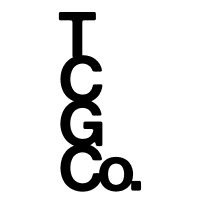
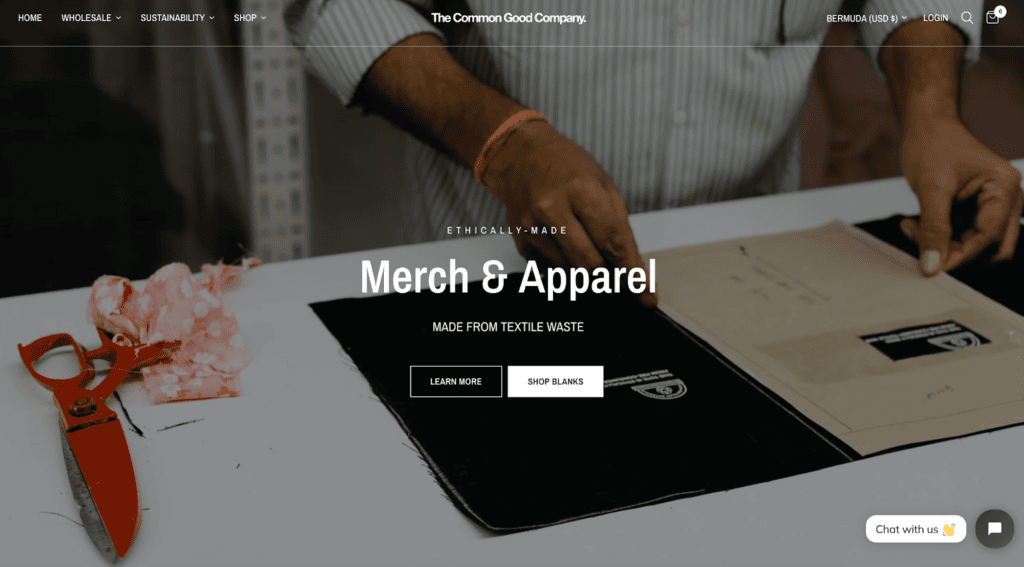
“By using Recycled Pre-consumer textile waste and Recycled Polyester in our garments, we have eliminated the unnecessary waste, water use, land use and pollution that are typically involved with the production of yarns made from virgin materials.”
The Common Good Company
🌎
How do they ensure their sustainability?
The Common Good Company ensures their sustainability by developing their own 100% recycled textile materials, which follow the Global Recycled Standard.
- Their T-shirt fabric comprises 60% recycled cotton—repurposed from pre-consumer waste—and 40% recycled polyester (rPET)—regenerated from single-use objects like plastic water bottles. This alleviates the stress on natural resources to grow more cotton and extract virgin fossil fuels while reducing waste in landfills and the oceans. For example, their orders in 2022 saved 2,433.6 kgs of textile waste and 5,3442.7 plastic bottles.
- The Common Good Company also strives to reduce waste further down the life-cycle in the manufacturing stage with a zero-waste initiative. Their manufacturing factory implements a zero-waste cutting process, which manipulates the cutting layouts in order to reduce wastage. Furthermore, factory spill is remanufactured and used in future purchase orders without impacting quality while scrap and yarn waste is sorted for recycling. Additionally, the brand is a part of the Noissue Eco Alliance, committing to using low-impact materials, such as FSC-certified issue papers and reusable compostable bags.
- Lastly, The Common Good Company reduces their climate impact by opting for less carbon-intensive modes of transport, partnering with a carbon-neutral delivery service (Sendle), offsetting emissions with One Tree Planted, and powering their home/office with Powershop, Australia’s greenest power company who offset all carbon emissions.
🌐
How do they ensure their ethics?
The Common Good Company traces all their suppliers and audits the final production stage. Their manufacturing partner is certified by Fairtrade, SA8000, and SEDEX.
🤝
Are they part of any giving-back programs?
The Common Good Company creates garments and accessories for organizations advocating climate action, such as recycled beanies for Surfers for Climate and merchandise for AFLP4CA. Additionally, in 2022, the brand raised over $12,000 with Downlands Design Studio for Flood Relief Fundraising.
🛍️
What is their product range?
- Best for: womenswear, menswear
- Product range: T-shirts, fleece, beanies, totes
- Price range: $$
- Size range: XS–XL
Dedicated: Swedish Streetwear Brand Dedicated to Doing Good

“Our sustainable clothing brand is built on transparency, honesty, and sticking true to our values.”
Dedicated
🌎
How do they ensure their sustainability?
Dedicated’s sustainability efforts focus on sourcing low-impact materials.
- They use a high proportion of eco-friendly fabrics, including organic cotton certified by Fairtrade and the Global Organic Textile Standard, hemp, TENCELTM Lyocell, recycled wool, and recycled polyester. Specifically, 64% of the cotton used in their 2022 collection was certified with Fairtrade and GOTS.
- Regarding packaging materials, Dedicated reduces their impact by opting for bags and boxes with high recycled content. In 2022, 63.2 % of their packaging was from recycled content. Specifically, they use GRS-certified poly bags made of 100% recycled plastics.
- Furthermore, the brand partners with ClimatePartner to map their Scope 1, 2, and 3 carbon emissions.
- In 2022, they identified the manufacturing stage as their hotspot for emissions and worked toward finding reduction solutions with their suppliers. Dedicated also takes other approaches to reduce their climate impact, including prioritizing boat shipments for bulk production and installing insulation for their premises.
🌐
How do they ensure their ethics?
Dedicated ensures their ethics by being transparent about their supply chain.
- They trace most of their supply chain and work only with manufacturing partners that share the same values, and that are certified by reliable and legitimate social standards. Their supply chain holds the following standards: the Global Recycle Standard, SA8000, WRAP, and SEDEX. In 2022, 78% of their manufacturers were audited and visited.
- Dedicated also has a Code of Conduct that covers four of the ILO’s Fundamental Principles and Rights at Work.
🤝
Are they part of any giving-back programs?
Dedicated is not known to be part of any giving-back programs.
🛍️
What is their product range?
- Best for: womenswear, menswear
- Product range: T-shirts, tops, dresses, knitwear, sweatshirts, skirts, swimwear, shirts, blouses, pants, shorts, jumpsuits, jackets, socks, underwear, accessories
- Price range: $$
- Size range: XS–2XL
HYER GOODS: Bags Made With Deadstock
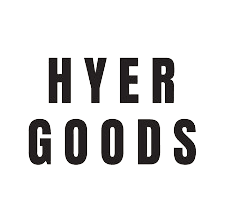
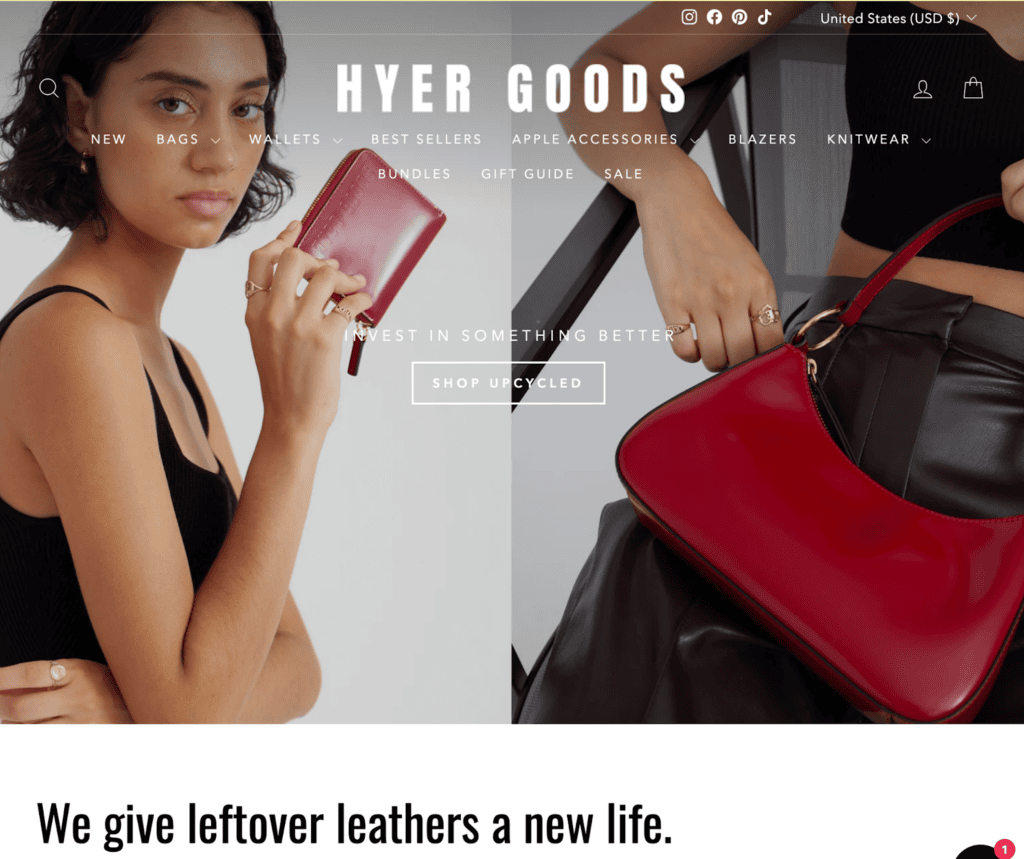
“By upcycling “trash” we eliminate the massive energy footprint needed to cultivate land, livestock, crops and fertilizers, while simultaneously reducing the amount of waste being sent to landfill. ”
HYER GOODS
🌎
How do they ensure their sustainability?
HYER GOODS ensures their sustainability by rescuing yarns and fabrics abandoned by the fashion industry and turning them into beautiful bags, clothing items, and accessories.
- For example, their Luxe Mini Bucket Bag is cut from leather leftovers. Their entire collection of bags, wallets, jackets, and beanies are also crafted from deadstock, surplus, and leftovers, including luxury leftover leather, deadstock leather, locally sourced abandoned wool yarns, and deadstock canvas.
- Regarding their leather materials, HYER GOODS prioritizes using animal skins that are vegetable-tanned and made in Italy, utilizing some of the world’s best leather production methods. Also, all of the ready-made leather leftovers they source are tested for chrome, ensuring the leather is safe to wear. Beyond reducing carbon emissions through diverting textile waste from landfills, HYER GOODS offsets 100% of their carbon emissions from shipping.
- Lastly, they partner with EcoCart to support Global Sustainable Infrastructure Projects, investing in multiple sustainable infrastructure carbon offset projects, like wind and solar farms, biogas, and hydropower.
🌐
How do they ensure their ethics?
HYER GOODS traces most of their supply chain and audits their final stage of production.
🤝
Are they part of any giving-back programs?
HYER GOODS has pledged to donate 1% of net sales on their site to support organizations that foster the physical and mental well-being of people in need. Some of the previous recipients of their donations are the Malala Fund, WHO, No Kid Hungry, and The Okra Project.
🛍️
What is their product range?
- Best for: menswear, womenswear
- Product range: bags, wallets, blazers, beanies, scarves
- Price range: $$$
- Size range: XS–L
Why Is It Important to Buy Products Made of More Sustainable Fabrics
It is important to buy products made of more sustainable fabrics because a sustainable textile industry has a lower carbon footprint, helps save natural resources, and is better for forests, animals, and humans.
Buying Sustainable Fabrics Reduces Your Carbon Footprint
The production of clothing and footwear is estimated to contribute 10% of global greenhouse gas emissions—more than all international flights and shipping combined. If the fashion industry were a country, it would be the fourth largest emitter of carbon dioxide.
One way to reduce the carbon footprint of the clothes you buy is to opt for sustainable fabrics. Sustainable fabrics, which are often made with natural or recycled fibers, have relatively low carbon footprints compared to petroleum-based fabrics. For example, organic cotton made in the US has a carbon footprint of 2.35 kg CO2 (per ton of spun fiber)—a quarter of polyester’s carbon footprint.
Buying Sustainable Fabrics Reduces Demand for Natural Resources and Waste Management
The textile industry uses water and land to grow cotton and other fibers. It is estimated that 79 billion cubic meters of water were used for the sector worldwide in 2015. For example, producing a single cotton t-shirt requires as much water as one person drinks for 2.5 years (2,700 liters of fresh water).
Worse yet, the textile economy is vastly more linear than circular: the largest amount of resources used in clothes ended up in landfill (instead of being recycled to remake clothes). According to a report by the Ellen MacArthur Foundation,
- Less than 3% of materials used in the textile economy in 2015 came from recycled sources.
- In other words, more than 97% of resources used in making clothes are newly extracted.
When clothing items are disposed of within a short period of time—under a year in the case of half of the fast fashion clothes—the natural systems that provide raw materials for fabrics don’t have enough time to recover and regenerate, which could lead to ecological breakdown.
Sustainable fabrics are made with less water and emissions while lasting longer:
- Because they are durable, you don’t need to buy new clothes too often.
- Thus, you help reduce the pressure to extract more resources for making new items.
Similarly, making and consuming sustainable fabrics made with recycled materials reduces the demand for virgin materials while helping tackle waste management.
Buying Sustainable Fabrics Encourages Sustainable Management of Forests
Sustainable plant-based fabrics are made with raw materials from forests and plantations that are sustainably managed, such as complying with FSC standards.
When you buy sustainable plant-based fabrics, you discourage unsustainable forestry practices like illegal logging. You can help reduce deforestation, biodiversity loss, and the effects of climate change.
Buying Sustainable Fabrics Encourages Fairer Treatment of Animals
The fashion industry is rife with animal mistreatment when it comes to making animal-based fabrics like wool or silk. Every year, billions of animals suffer and die for clothing and accessories.
Buying sustainable vegan alternatives can help to reduce the pressure on raising more and more animals to meet the demand for animal-based fabrics while sacrificing their well-being and lives.
Suppose you have to buy fabrics made with, for example, wool or silk; make sure you only choose brands committed to cruelty-free products. In that case, you help advocate better treatments for animals raised within the textile industry.
Using Sustainable Fabrics Encourages Fairer Treatment of Textile Workers
Recent statistics from UNICEF estimated as many as 170 million child laborers worldwide, many of whom were engaged in some form of work in the textile industry. They don’t get paid minimum wages and often work long hours.
When you buy sustainable fabrics from brands transparent about the working conditions at their factories, you discourage the use of child labor and help promote better working conditions for textile workers.
How Can You Generally Buy More Sustainable Fabrics
The key to sustainably buying fabrics is to check on relevant environmental and original certifications.
For natural fabrics:
- Global Organic Textile Standard (GOTS): A globally recognized certification system that ensures a certain threshold of organic content has been met. It covers manufacturing, packaging, labeling, transportation, and distribution (but not what happens in the fields where crops are grown).
- USDA Certified Biobased Product: The USDA BioPreferred® Certification is a voluntary certification offered by the United States Department of Agriculture. The certification identifies products made from plants or other renewable materials.
- Ecolabel: Ecolabel is the official European Union voluntary label recognized worldwide for certified products with a guaranteed, independently verified low environmental impact. The label requires high environmental standards throughout the entire life-cycle: from raw material extraction through production and distribution to disposal. It also encourages companies to develop innovative, durable, easy-to-repair, and recyclable products.
For plant-based semi-natural/semi-synthetic fabrics:
- Forest Stewardship Council: An FSC certification ensures that the wood (or wood-like material) comes from responsibly managed forests that provide environmental, social, and economic benefits.
There are two types of FSC Certification:- FSC Forest Management Certification, with a focus on the origin of the wood—the forest.
- FSC Chain of Custody Certification, which focuses on the path from the forest to the customer’s home.
- Program for Endorsement of Forest Certification: PEFC’s approaches to sustainable forest management are in line with protecting the forests globally and locally and making the certificate work for everyone. Getting a PEFC certification is strict enough to ensure the sustainable management of a forest is socially just, ecologically sound, and economically viable but attainable not only by big but small forest owners.
For recycled fabrics:
- Recycled Claim Standard (RCS): The Textile Exchange RCS was originally developed as an international, voluntary standard that sets requirements for third-party certification of Recycled input and chain of custody.
- The Global Recycled Standard (GRS): The Global Recycled Standard (GRS) is an international, voluntary, full product standard that sets requirements for third-party certification of Recycled Content, chain of custody, social and environmental practices, and chemical restrictions. It can be used for any product with more than 20% recycled material.
For all types of fabrics:
- STeP by OEKO-TEX®: STeP by OEKO-TEX® is an independent certification system for brands, retailers, and manufacturers from the textile and leather industry. It communicates organizational environmental measures, including reducing carbon footprint and water usage.
- OEKO-TEX® Standard 100: OEKO-TEX® labels aim to ensure that products pose no risk to human health (i.e., containing banned chemicals).
Some certifications that are signaling brands’ efforts toward lowered environmental impacts and a circular economy are:
- B Corp Certification: The label B Corp is a certification reserved for for-profit companies. Certified holders are assessed on their social and environmental impacts.
- Cradle2Cradle certification: Cradle2Cradle provides a standardized approach to material circularity. It assesses whether products have been suitably designed and made with the circular economy in mind covering five critical categories: material health, material reuse, renewable energy and carbon management, water stewardship, and social fairness.
Final Thoughts
Hats can be one of the higher impact and less sustainable clothing accessories due to their conventional use of high-impact fabrics like cotton canvas or polyester. Thus, it is important to shop with ethics and sustainability in mind when choosing your next hat.
By purchasing new or preloved hats from brands that commit to sustainability, you support their mission to create a fairer and less harmful textile industry for all lives on Earth.
Here is the list (again) of the most sustainable hat brands:
- TOPIKU
- Patagonia
- Ecoalf
- United by Blue
- Pachacuti
- Tentree
- Happy Earth Apparel
- ASKET
- Outerknown
- The Common Good Company
- Dedicated
- HYER GOODS
To make your hat use even more sustainable, follow these steps:
- Buy second-hand, recycled, or upcycled hats made with low-impact materials.
- Keep your hats as long as possible.
- At the end-of-life of your hats, upcycle the materials to extend their usage and arrange for them to be recycled or properly disposed of.
Stay impactful,

Sources
- Impactful Ninja: How Sustainable Are Synthetic Fabrics? A Life-Cycle Analysis
- Impactful Ninja: How Sustainable Are Canvas Fabrics? A Life-Cycle Analysis
- Impactful Ninja: How Sustainable Are Cotton Fabrics? A Life-Cycle Analysis
- TOPIKU: Home
- Patagonia: Home
- Ecoalf: Home
- United by Blue: Home
- Pachacuti: Home
- Tentree: Home
- Happy Earth Apparel: Home
- ASKET: Home
- Outerknown: Home
- The Common Good Company: Home
- Dedicated: Home
- HYER GOODS: Home
- B Corporation: TOPIKU
- TOPIKU: Guilt-free sun protection
- Impactful Ninja: How Sustainable Are Organic Cotton Fabrics? A Life-Cycle Analysis
- Impactful Ninja: How Sustainable Are Leather Fabrics? A Life-Cycle Analysis
- TOPIKU: Climate positive.
- CHANGE CLIMATE: TOPIKU is Climate Neutral
- Carbon Fingerprint: Home
- TOPIKU: LIFE CYCLE ASSESSMENT | 2023 CARBON FOOTPRINT REPORT
- TOPIKU: Supplier Code of Conduct
- International Labour Organization: ILO Declaration on Fundamental Principles and Rights at Work
- 1% for the Planet: Home
- Patagonia: Hats & Accessories
- Impactful Ninja: How Sustainable Are Natural Fabrics? A Life-Cycle Analysis
- Patagonia: The Climate Crisis Is Our Business
- Patagonia: The Climate Crisis Is Our Business | No More Virgin Petroleum Fibers by 2025
- Patagonia: The Climate Crisis Is Our Business | Is Each Product Worth the Environmental Cost?
- Patagonia: The Climate Crisis Is Our Business | Help Suppliers Cut Emissions
- Patagonia: Environmental Responsibility
- Patagonia: Regenerative Organic Certified fibers
- Patagonia: Hemp
- Patagonia: Man-made Cellulose Fibers
- Patagonia: Recycled Cotton
- Patagonia: Recycled Polyester
- Patagonia: WORN WEAR
- B Corporation: Patagonia
- Bluesign: Home
- Fair Trade: Home
- FAIR TRADE CERTIFIED: Improving Lives, Protecting the Planet.
- Patagonia: Social Responsibility
- Patagonia: Fair Trade
- Patagonia: Fair Labor Association
- Patagonia: Living Wage Program
- Patagonia: Migrant Workers Program
- Patagonia: Responsible Purchasing Practices
- Patagonia: Where We Do Business
- Patagonia: 1% for the Planet
- Forbes: Yvon Chouinard And The Patagonia Purpose Trust— What Is It And Will It Work?
- Fast Company: Patagonia uses capitalism to save the planet with the Holdfast Collective
- The New York Times: Patagonia Founder Gives Away the Company to Fight Climate Change
- Ecoalf: Materials
- Ecoalf: History
- Ecoalf: DON’T THINK IT’S A UTOPIA | DISCOVER OUR 2021 SUSTAINABILITY REPORT
- Impactful Ninja: How Sustainable Are Recycled Fabrics? A Life-Cycle Analysis
- Impactful Ninja: How Sustainable Are Recycled Polyester Fabrics? A Life-Cycle Analysis
- Impactful Ninja: How Sustainable Are Recycled Cotton Fabrics? A Life-Cycle Analysis
- Impactful Ninja: How Sustainable Are Recycled Wool Fabrics? A Life-Cycle Analysis
- Impactful Ninja: How Sustainable Are Cashmere Fabrics? A Life-Cycle Analysis
- Ecoalf: History
- Ecoalf: Sustainable Report 2021 | DON’T THINK IT’S A UTOPIA
- Impactful Ninja: How Sustainable Are Natural Fabrics? A Life-Cycle Analysis
- Impactful Ninja: How Sustainable Are Linen Fabrics? A Life-Cycle Analysis
- Impactful Ninja: How Sustainable Are Kapok Fabrics? A Life-Cycle Analysis
- Bluesign®: Home
- B Corporation: Ecoalf
- Ecoalf: Code of Conduct
- Ecoalf: ECOALF foundation
- Ecoalf: Upcycling the Oceans
- Ecoalf: Because There’s No Planet B
- Ecoalf: Personas
- United by Blue: Hats
- Impactful Ninja: How Sustainable Are Recycled Fabrics? A Life-Cycle Analysis
- Impactful Ninja: How Sustainable Are Organic Fabrics? A Life-Cycle Analysis
- B Corporation: United by Blue
- United by Blue: Backpacks
- United by Blue: Our Story
- Good On You: Brand Directory | United by Blue
- United by Blue: Materials
- Impactful Ninja: How Sustainable Are Recycled Fabrics? A Life-Cycle Analysis
- Impactful Ninja: How Sustainable Are Organic Cotton Fabrics? A Life-Cycle Analysis
- Global Organic Textile Standard: Home
- Textile Exchange: Organic Content Standard
- Impactful Ninja: How Sustainable Are Recycled Cotton Fabrics? A Life-Cycle Analysis
- Textile Exchange: Global Recycle Standard
- OEKO-TEX: Home
- Impactful Ninja: How Sustainable Are Recycled Wool Fabrics? A Life-Cycle Analysis
- Textile Exchange: Responsible Wool Standard
- Impactful Ninja: How Sustainable Are Recycled Polyester Fabrics? A Life-Cycle Analysis
- Impactful Ninja: How Sustainable Are Recycled Nylon Fabrics? A Life-Cycle Analysis
- Impactful Ninja: How Sustainable Are Hemp Fabrics? A Life-Cycle Analysis
- Impactful Ninja: How Sustainable Are Cashmere Fabrics? A Life-Cycle Analysis
- Impactful Ninja: How Sustainable Are Viscose Fabrics? A Life-Cycle Analysis
- Lenzing: Home
- Impactful Ninja: How Sustainable Are Ecovero Fabrics? A Life-Cycle Analysis
- United by Blue: Plastic Free
- United by Blue: IMPACT REPORT
- United by Blue: Code of Conduct
- International Labour Organization: Fundamental Principles and Rights at Work
- United by Blue: Manufacturing
- Bluesign: Home
- Amfori: BSCI
- SA International – SA8000 Standard
- WRAP Compliance: Home
- Impactful Ninja: How Sustainable Are Wool Fabrics? A Life-Cycle Analysis
- United by Blue: Community Cleanups
- United by Blue: Corporate Cleanups
- United by Blue: DIY Cleanups
- United by Blue: High Yield Cleanups
- United by Blue: International Cleanups
- Pachacuti: Our Planet
- Britannica: Cyclanthaceae | Plant Order
- Pachacuti: THE PACHACUTI GUIDE TO CARING FOR YOUR HAT
- Pachacuti: OUR STORY
- Pachacuti: OUR PEOPLE
- Tentree: Hats & Beanies
- Tentree: Tree Planting FAQ
- Tentree: Circularity By tentree
- Tentree: Our Materials
- Tentree: Thinking Outside the Box
- Tentree: WE’RE TENTRE | We Believe Big Change Starts Small.
- SuperCircle: Home
- Treet: Home
- Tentree: SuperCircle
- Impactful Ninja: How Sustainable Are Organic Cotton Fabrics? A Life-Cycle Analysis
- Impactful Ninja: How Sustainable Are Hemp Fabrics? A Life-Cycle Analysis
- Impactful Ninja: How Sustainable Are Recycled Polyester Fabrics? A Life-Cycle Analysis
- Impactful Ninja: How Sustainable Are TENCELTM Fabrics? A Life-Cycle Analysis
- Tentree: InMotion Tank | Recycled Materials
- REPREVE: Home
- Tentree: Eco-friendly socks
- Tentree: Responsible Packaging
- B Corporation: Tentree
- CLIMATE NEUTRAL: Tentree
- Tentree: Ethical Manufacturing
- Good On You: Brand Directory | Tentree
- Fair Wear Foundation: Home
- Sedex Members Ethical Trade Audit: Home
- Worldwide Responsible Accredited Production – WRAP: Home
- Shopify: Ten Tree International Inc. (tentree) | Commitment to Protect Forests Through Our Paper, Packaging and Fabrics Choices
- Tentree: THE ENVIRONMENTOR | Here’s Where We Plant Your Trees
- Tentree: 04 nature | TENTREE SUSTAINABILITY
- B Corporation: Happy Earth Apparel
- Happy Earth Apparel: Organic hats & beanies
- Happy Earth Apparel: About Us
- Good On You: Brand Directory | Happy Earth Apparel
- Impactful Ninja: How Sustainable Are Organic Cotton Fabrics? A Life-Cycle Analysis
- Happy Earth Apparel: Organic socks
- Impactful Ninja: How Sustainable Are Recycled Nylon Fabrics? A Life-Cycle Analysis
- Impactful Ninja: How Sustainable Are Elastane Fabrics? A Life-Cycle Analysis
- Change Climate: Happy Earth LLC | A Climate Neutral Certified Brand
- Happy Earth Apparel: Supporting Carbon Emissions Reduction
- Happy Earth Apparel: Code of Conduct
- International Labor Organization (ILO): Fundamental Principles and Rights at Work
- Worldwide Responsible Accredited Production: Home
- Happy Earth Apparel: Tree Planting
- ASKET: Scarves & Beanies
- Impactful Ninja: How Sustainable Are Merino Wool Fabrics? A Life-Cycle Analysis
- ASKET: The Repair Program
- ASKET: The Revival Program
- Textile Exchange: The RCS and GRS are designed to boost the use of recycled materials
- ASKET: Materials | Recycled Cashmere
- ASKET: Materials | Recycled Wool
- ASKET: Materials | Recycled Synthetics
- ASKET: The Care Program
- ASKET: Materials | Organic Cotton
- ASKET: Materials | Linen
- ASKET: Materials | Lyocell
- ASKET: Full Transparency
- ASKET: TRACKING HOW WE FOLLOW OUR PRINCIPLES
- Textile Exchange: Responsible Wool Standard
- ASKET: Materials | Traceable Merino
- Outerknown: Men’s Hats
- Impactful Ninja: How Sustainable Are Hemp Fabrics? A Life-Cycle Analysis
- Impactful Ninja: How Sustainable Are Organic Cotton Fabrics? A Life-Cycle Analysis
- Impactful Ninja: How Sustainable Are Recycled Cotton Fabrics? A Life-Cycle Analysis
- Impactful Ninja: How Sustainable Are Wool Fabrics? A Life-Cycle Analysis
- Outerknown: Progress Every Step Of The Way
- Outerknown: What is Outerworn?
- Shopify: OUTERKNOWN Supplier Code of Conduct
- Fair Labor Association: Home
- International Labour Organization: ILO Declaration on Fundamental Principles and Rights at Work
- Fairtrade: Fairtrade Premium
- Brother Benno: Home
- The Ocean Cleanup: Home
- Ocean Conservancy: Home
- Surfrider Maui Chapter: Home
- Surfrider Foundation: Home
- Everytown: Home
- B Corporation: The Common Good Company
- The Common Good Company: Beanies
- The Common Good Company: OUR (RECYCLED) MATERIAL
- Textile Exchange: Global Recycled Standard
- Impactful Ninja: How Sustainable Are Recycled Cotton Fabrics? A Life-Cycle Analysis
- Impactful Ninja: How Sustainable Are Recycled Polyester? A Life-Cycle Analysis
- The Common Good Company: 2022 Impact Report
- The Common Good Company: OUR CERTIFICATIONS
- Noissue Eco Alliance: Home
- The Common Good Company: OUR ACCOUNTABILITY
- Sendle: Home
- Good On You: Brand Directory | The Common Good Company
- Fairtrade International: Home
- SA International: SA8000
- SEDEX: Home
- Surfers For Climate: Recycled beanies
- The Common Good Company: Our Future, Our Planet, Our Game.
- Footy For Climate: Home
- Dedicated: Beanies
- Dedicated: Headwear
- Good On You: Brand Directory | Dedicated
- Dedicated: Fabrics | Organic cotton
- Fairtrade: Home
- Global Organic Textile Standard: Home
- Dedicated: Fabrics | Hemp
- Dedicated: Fabrics | TENCELTM Lyocell
- Dedicated: Fabrics | Recycled Wool
- Dedicated: Fabrics | Recycled Polyester
- Dedicated: Sustainability Report 2022
- ClimatePartner: Home
- Dedicated: Suppliers
- Dedicated: Our Story
- Textile Exchange: Global Recycle Standard
- SA International: SA8000
- WRAP Compliance: Home
- SEDEX: Home
- Dedicated: Code of Conduct
- International Labour Organization: Fundamental Principles and Rights at Work
- HYER GOODS: Bags
- HYER GOODS: Beanies
- HYER GOODS: Luxe Mini Bucket Bag
- HYER GOODS: Our Materials
- HYER GOODS: Luxury Leftovers
- HYER GOODS: Deadstock Leather Collection
- Impactful Ninja: How Sustainable Are Wool Fabrics? A Life-Cycle Analysis
- Impactful Ninja: How Sustainable Are Canvas Fabrics? A Life-Cycle Analysis
- HYER GOODS: Carbon Neutrality
- Good On You: Brand Directory | HYER GOODS
- HYER GOODS: Our Monthly Mission
- Malala Fund: Home
- WHO: Home
- No Kid Hungry: Home
- The Okra Project: Home
- European Parliament: The impact of textile production and waste on the environment (infographic)
- Science Direct: The challenge of “Depeche Mode” in the fashion industry – Does the industry have the capacity to become sustainable through circular economic principles, a scoping review
- Science Direct: Carbon Footprint of Textile and Clothing Products
- European Parliament: Environmental impact of the textile and clothing industry
- European Parliament: What if fashion were good for the planet?
- Ellen MacArthur Foundation: A New Textiles Economy: Redesigning fashion’s future
- McKinsey: Style that’s sustainable: A new fast-fashion formula
- Forest Stewardship Council: Home
- Our World in Data: Deforestation and Forest Loss
- Our World in Data: Renewable Energy
- Peta: Animals Used For Clothing
- The Guardian: Child labour in the fashion supply chain
- Impactful Ninja: How Sustainable Are Natural Fabrics? A Life-Cycle Analysis
- Global Organic Textile Standard (GOTS): Home
- BioPreferred: WHAT IS THE BIOPREFERRED PROGRAM?
- European Commission: Environment | EU Ecolabel
- Impactful Ninja: How Sustainable Are Semi-Natural/Semi-Synthetic Fabrics? A Life-Cycle Analysis
- Forest Stewardship Council
- FSC Forest Management Certification
- FSC Chain of Custody Certification
- Textile Exchange: The RCS and GRS are designed to boost the use of recycled materials
- Program for Endorsement of Forest Certification
- Impactful Ninja: How Sustainable Are Recycled Fabrics? A Life-Cycle Analysis
- Textile Exchange: Recycled Claim Standard
- Textile Exchange: Global Recycled Standard
- OEKO-TEX: Certification according to STeP by OEKO-TEX®
- OEKO-TEX: OEKO-TEX® Standard 100
- B Corp Certification: Home
- C2CCertified: Home



